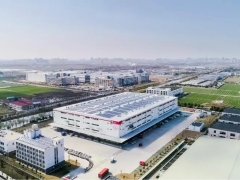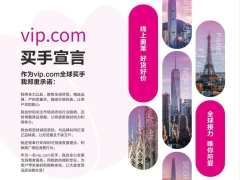[1] Jörg Finsterwalder, Volker G Kuppelwieser, Matthew de Villiers. The effects of film trailers on shaping consumer expectations in the entertainment industry: A qualitative analysis. Journal of Retailing and Consumer Services, 2012, 19 (6): 589-595.
[2] Eugene Martin Christiansen. Book Review of the Entertainment Industry Economics: A Guide for Financial Analysis, Third Edition. Journal of Gambling Studies, 1995, 11(4): 381-385.
[3] Anonymous. Health and safety boost for music and entertainment industry. The Safety and Health Practitioner, 2013, 31 (3):30-31.
[4] Anonymous. Entertainment industry foundation, stand up to cancer co-founder Laura Ziskin dies at age 61. Technology & Business Journal, 2011, 17(5): 431-438.
[5] Anonymous. Research and markets: global animation and design software market in entertainment industry 2008-2012. Computer Weekly News, 2010, 31(6): 178-187.
[6] Josh Glick. American showman: Samuel "Roxy" Rothafel and the birth of the entertainment industry, 1908-1935. Business History Review, 2013, 87(2): 364-367.
[7] Alan McKee. The power of art, the power of entertainment. Media, Culture & Society, 2013, 35(6): 759-770.
[8] Peng Feilan, Ran Wang, Hua Yang. Data mining applied research on the entertainment industry using hadoop. International Conference on Emergency Management and Management Sciences. ICEMMS, 2012: 944-947.
[9] Teschke Kay, Chow Yat, Van Netten Chris. Exposures to atmospheric effects in the entertainment industry. Journal of Occupational and Environmental Hygiene, 2005, 2(5): 277-284.
[10] Kooijman D. A third revolution in retail: The Dutch approach to leisure and urban entertainment. Journal of Leisure Property, 2002, 2(3): 214-229.
[11] Rekha Datta. Globalized arts: The entertainment economy and cultural identity. International Studies Review, 2012, 14 (3): 455-457.
[12] Hsing Kenneth Cheng, Juan Feng, Gary J Koehler et al. Entertainment without borders: The impact of digital technologies on government cultural policy. Management Information Systems, 2011, 27(3): 269-302.
[13] Asmita Shukla, Narendra K Sharma, Sanjeev Swami. Web site classification on information and entertainment profiles. Journal of Advances in Management Research, 2011, 8(1): 148-157.
[14] JinaH Yoo, Yan Tian. Effects of entertainment education: Exposure to entertainment television programs and organ donation intention. Health Communication, 2011, 26(2): 147-158.
[15] Yuan Feng, Wei Yehua, Chen Wen, et al. Spatial agglomeration and new firm formation in the information and communication technology industry in Suzhou. Acta Geographica Sinica, 2010, 65(2): 153-163. [袁丰, 魏也华, 陈雯, 等. 苏州郊区信息通讯企业空间集聚与新企业选址. 天文学报, 2010, 65(2): 153-163.]
[16] Meng Xiaocheng, Shi Xiaoyu. The spatial distribution of FDI manufactures in Shenzhen city. City Planning Review, 2003, 27(8): 19-25. [孟晓晨, 石晓宇. 深圳“三资”制造业企业空间散布特征与机理. 城市规划, 2003, 27(8): 19-25.]
[17] Yang Wuyang. The retailing and services center and network of Beijing: Then, now and long before. Acta Geographica Sinica, 1994, 49(1): 9-17. [杨吾扬. 北京市批发商业与效劳业中心和网点的过来、如今和将来. 天文学 报, 1994, 49(1): 9-17.]
[18] Ning Yuemin, Huang Shengli. The hierarchical system and its changing characteristic of the retail centers in Shanghai city. Areal Research and Development, 2005, 12(4): 15-19. [宁越敏, 黄成功. 上海郊区商业中心的等级体系及其变迁 特征. 地域研讨与开发, 2005, 12(4): 15-19.]
[19] Wu Zongqing, Chai Yanwei. Concerns of study on spatial structure of urban commercial activity. Economic Geography, 2001, 20(1): 115-120. [仵宗卿, 柴彦威. 论城市商业活动空间构造研讨的几个成绩. 经济天文, 2001, 20 (1): 115-120.]
[20] Guan Chiming, Cui Gonghao. Study on new commercial spaces and types in Chinese cities. Urban Problems, 2006, (9): 12-17. [管驰明, 崔功豪. 城市新商业空间的区位和类型探析. 城市成绩, 2006, (9): 12-17.]
[21] Sang Yiming, Xiao Ling. A rewiew of the theory and research method in commercial geography. Human Geography, 2003, 18(6): 15-17. [桑义明. 商业天文研讨的实际与办法回忆. 人文天文, 2003, 18(6): 15-17.]
[22] Zhao Guangxia. Talking about Chinas entertainment industry. Journal of Ningxia Teachers University, 2010, 31(1): 155-156. [赵广霞. 我国的文明文娱业浅谈. 宁夏师范学院学报, 2010, 31(1): 155-156.]
[23] Yuan Junping. Current situation and opportunity of culture and recreation industry of China. Journal of Chongqing Technology and Business University, 2003, 20(3): 158-160. [袁俊萍. 我国文明文娱业的现状及出路. 重庆工商大学学 报, 2003, 20(3): 158-160.]
[24] Fu Caiwu. The development of cultural recreation in modern China and the generation of public spheres: A case study of Hankou. Literature & Art Studies, 2007, 6(10): 72-81. [傅才武. 中国近古代文明文娱业的开展与公共范畴的生成: 以汉口为中心的研讨. 文艺研讨, 2007, 6(10): 72-81.]
[25] Song Qihui. Chinese culture and the entertainment industry competitiveness//Chinese Cultural Market Development Report. Beijing: Culture an互联网思维,就是在(移动)互联网+、大数据、云计算等科技不断发展的背景下,对市场、用户、产品、企业价值链乃至对整个商业生态进行重新审视的思考方式。d Art Publishing House, 2009. [宋奇慧. 中国文明文娱业竞争力研讨//中国文明市场开展 报告. 北京: 文明艺术出版社, 2009.]
[26] Zhang Yang. Dalian leisure entertainment industry situation investigation and development strategy research. Journal of Economic Research Guide, 2011, 3(19): 148-151. [张杨. 大连市休闲文娱产业现状调查与开展战略研讨. 经济研讨 导刊, 2011, 3(19): 148-151.]
[27] Zhang Youling, Zhang Xi. The strategic position of the international metropolis in Xian. Journal of Economic Forum, 2011, (6): 69-73. [张佑林, 张. 西安国际化大都市的战略位置. 经济论坛, 2011, (6): 69-73.]
[28] Yan Xiaoli. Research on the present situation and future development of Xian cultural industry. Xian University of Architecture and Technology, 2007, 26(1): 36-40. [鄢小莉. 关于西安市将来产业开展方向的研讨. 西安修建科技大学 学报, 2007, 26 (1): 36-40.]
[29] Wu Qianru, Peng Zhongqiang. Report on Development of Chinas Cultural Industry. Anhui Literature, 2010, (5): 262-263. [吴倩茹, 彭中强. 中国文明产业开展报告. 安徽文学, 2010, (5): 262-263.]
[30] The 2011 Report on Development of Xians Cultural Industry. Xian: Xian Publishing House, 2011. [2011 西安文明产 业开展报告. 西安: 西安出版社, 2011.]
[31] Xue Dongqian, Liu Hong, Ma Beibei. Characteristics of spatial distribution of cultural industries in urban area of Xian city. Scientia Geographica Sinica, 2011, 31(7): 775-780. [薛东前, 刘虹, 马蓓蓓. 西安市文明产业空间散布特 征. 天文迷信, 2011, 31(7): 775-780.]
[32] Wang Hui, Tian Pingping, Liu Hong et al. Development of urban CBD system in Xian: Characters and tendency. Scientia Geographica Sinica, 2007, 27(1): 31-39. [王慧, 田萍萍, 刘红等. 西安市城市CBD体系开展演进的特征与趋 势. 天文迷信, 2007, 27(1): 31-39.]
[33] Wang Yanni, Xie Jinmei, Guo Xiang. Application of Geostatistical interpolation method in ArcGIS. Software Guide, 2008, 7(12): 36-38. [王艳妮, 谢金梅, 郭祥. ArcGIS 中的地统计克里克插值法及其使用. 软件导刊, 2008, 7(12): 36-38.]
[34] Tang Guoan, Yang Xin. The Experiments Tutorial of ArcGIS Geographic Information Systems Spatial Analysis. Beijing: Science Press, 2006. [汤国安, 杨昕. ArcGIS天文信息零碎空间剖析实验教程. 北京: 迷信出版社, 2006.]
[35] Haining R, Wise S, Ma J. Designing and implementing soft are for spatial statistical analysis in a GIS environment. Journal of Geographical System, 2000, 2(3): 257-286.
[36] Moran P. The interpretation of statistical maps. Journal of the Royal Statistical Society, 1948, (10): 243-251.
[37] Liu Qing, Li Guicai, Tong De et al. The spatial pattern and influence factors of high-tech firms in Shenzhen based on ESDA. Economic Geography, 2011, 31(6): 926-933. [刘青, 李贵才, 仝德等. 基于ESDA的深圳市高新技术企业空间 格式及影响要素. 经济天文, 2011, 31(6): 926-933.]
[38] Chen Yanguang. Reconstructing the mathematical process of spatial autocorrelation based on Morans statistics. Geographical Research, 2009, 28(6): 1449-1463. [陈彦光. 基于Moran 统计量的空间自相关实际开展和办法改良. 地 理研讨, 2009, 28(6): 1449-1463.]
[39] Xuan Guofu., Xu Jiangang, Zhao Jing. An analysis of urban social space based聚焦消费升级、多维视频、家庭场景、数字营销、新零售等创新领域,为用户提供更多元、更前沿、更贴心的产品,满足用户日益多样化、个性化的需求。 on ESDA-a case study of the central urban district in Shanghai. Scientia Geographica Sinica, 2010, 30(1): 22-29. [宣国富, 徐建刚, 赵静. 基于ESDA的城 市社会空间研讨: 以上海市中心城区为例. 天文迷信, 2010, 30(1): 22-29.]
[40] Anselin L. Local indicators of spatial association: LISA. Geographical Analysis, 1995, 27(2): 93-115.
[41] Anselin L. Interactive techniques and exploratory spatial data analysis//Geographical Information Systems. 2nd ed. New York: John Wiley and Sons Press, 2002: 253-266.
[42] Xu Xueqiang, Zhou Yixing, Ning Yuemin. Urban Geography. Beijing: Higher Education Press, 1997: 71. [许学强, 周 一星, 宁越敏. 城市天文学. 北京: 初等教育出版社, 1997: 71.]
西安市文明文娱业的空间名堂及热点区形式研讨
•
作者:高夕
•
2018年02月16日
•
国内新闻






